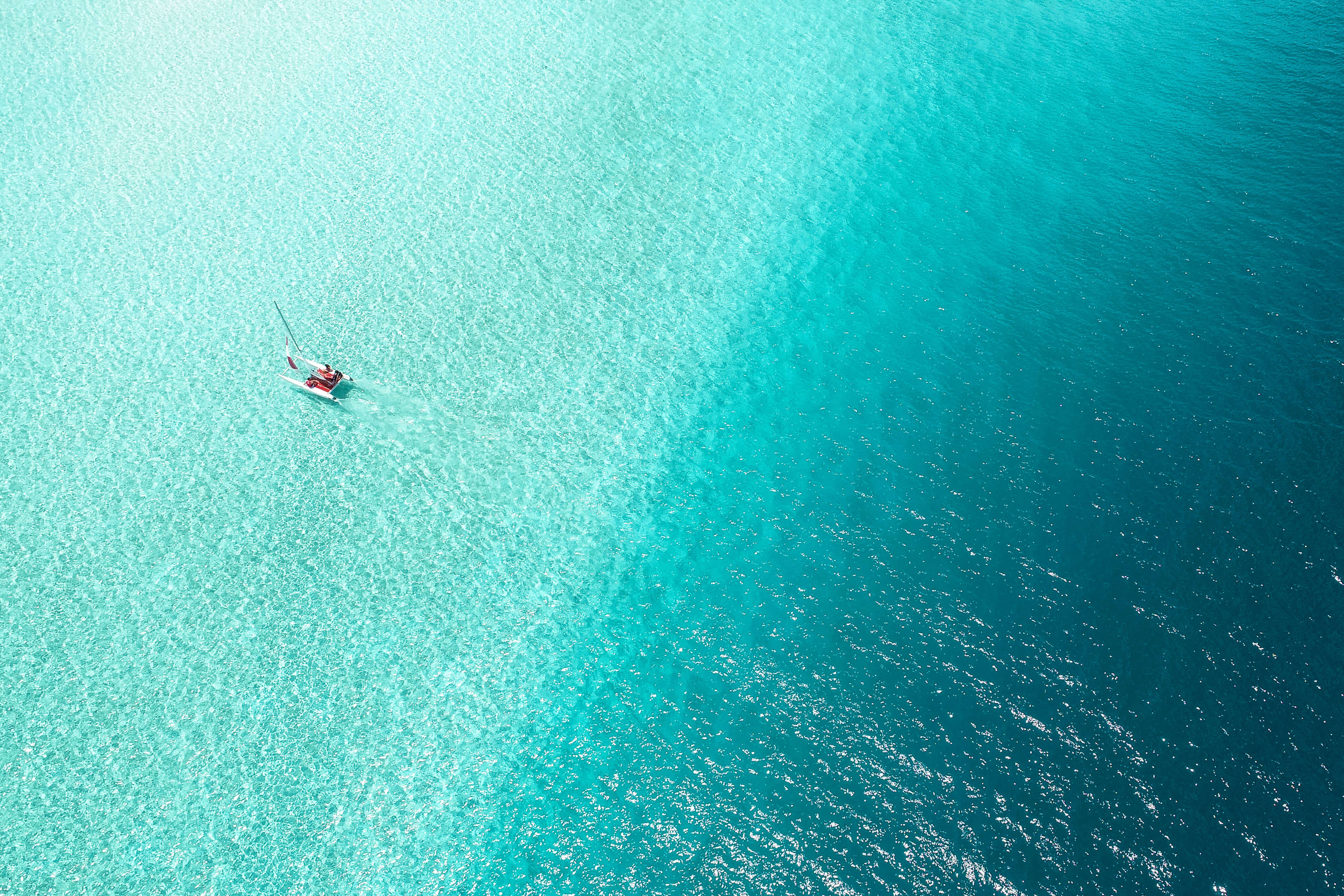1/1 Oops. Incorrect.
0%
0pts Earned
0/1correct
20/20
In what city can you find the tallest religious minaret in the world?
The Great Mosque of Algiers, also called the Djamaa el Djazaïr, has a minaret that reaches a record 867 feet above the city. The mosque complex was finished in 2019 at the cost of around $1 billion. At over 1.3 million square feet, it is able to accommodate 37,000 worshippers. The previous title of world’s tallest minaret was held by Casablanca’s Hassan II Mosque, at 689 feet tall.
Source: Guinness World RecordsMarrakesh
46%
Algiers
20%
Tunis
10%
Tripoli
24%
19/20
Which nation’s name was used by Greeks for “land north of the Sahara”?
Derived from the name of an Indigenous tribe based along the Gulf of Sidra (in the Mediterranean Sea), “Libya” was a word created by ancient Greeks. Still the name of the north-central African nation today, Libya was also used at times to reference the entire continent of Africa.
Source: BritannicaLibya
23%
Tunisia
36%
Algeria
21%
Morocco
20%
18/20
Mansa Musa, one of the richest men of all time, ruled what nation?
With an estimated fortune of over $400 billion at today’s valuations, Mali’s Mansa Musa is considered by some to be the richest man in history. Mali’s gold and salt resources in the 14th century were the basis of his wealth, and his empire owned roughly half of the gold in the world at the time.
Source: USA TodayMali
38%
Egypt
14%
Sudan
32%
Libya
16%
17/20
What is the tallest peak in the Atlas Mountains?
Mount Toubkal in Morocco reaches a height of 13,671 feet, making it the highest peak in the Atlas range and the highest mountain in all of North Africa. Unlike the majority of the Atlas Mountains, Mount Toubkal is formed by volcanic rock. The mountain is part of the Toubkal National Park, which is covered by juniper forests.
Source: Middle East EyeMount Guna
10%
Mount Choqa
21%
Mount Kinangop
25%
Mount Toubkal
44%
16/20
The Rio de Oro region of Western Sahara has a name meaning what?
The nation of Western Sahara is split into two regions: Saguia el-Hamra, which makes up the northern third of the country, and Rio de Oro (“River of Gold”), which covers the southern two-thirds. Río de Oro is bounded by Cape Blanco and Cape Bojador, covering 71,000 square miles. The climate in Río de Oro has an extreme range, from as low as 32 degrees Fahrenheit at night to as high as 122 degrees during the day.
Source: BritannicaRiver of Gold
82%
Low Mountain
3%
Red Forest
6%
Eternal Desert
9%
15/20
What is the largest island off the coast of North Africa?
Djerba is a 200-square-mile island in the Mediterranean Sea, connected to mainland Tunisia by a four-mile-long causeway. The island, the largest in North Africa, is located in the Gulf of Gabes, and its sandy beaches have made it a draw for tourists. Ancient Romans called it the “Land of the Lotus Eaters,” and control of the island changed hands from Roman to Arab to Norman to Sicilian to French and other powers over the centuries.
Source: Lonely PlanetSocotra
18%
Djerba
26%
Comoros
50%
Ramkine
6%
14/20
What was unique about the Libyan flag until 2011?
Green is a color strongly associated with Islam, and between the years of 1977 and 2011, green was the only color on the Libyan flag. During this time period, Libya was the only country with a simple one-color flag. In 2011, the flag was changed with the addition of three horizontal stripes (red, black, and green) and a central crescent moon symbol alongside a star.
Source: BritannicaIt was circular
26%
It was only one color
46%
It changed every year
17%
It used every rainbow color
11%
13/20
In which country can you find the highest point of the Sahara Desert?
The Sahara Desert covers parts of 11 countries: Egypt, Algeria, Chad, Libya, Mali, Mauritania, Morocco, Niger, Sudan, Western Sahara, and Tunisia. Only about a quarter of the Sahara Desert is actually covered in sand, with the rest of it made up of salt flats, gravel plains, mountains, and even volcanoes. The highest point of the Sahara Desert is Chad’s Mount Koussi, which is an extinct volcano that reaches 11,200 feet above sea level.
Source: Journey to EgyptEgypt
28%
Libya
25%
Sudan
28%
Chad
19%
12/20
Morocco’s Fes El-Bali is the world’s largest urban area without what?
The Medina of Fes El-Bali is a city home to over 150,000 people — and zero cars. According to Guinness World Records, this makes it the most populous car-free urban area in the world. The ancient city doesn’t have streets, and is instead connected by alleys that are only about two feet wide. Instead of cars, goods are transported by donkey or mule cart within the city.
Source: Guinness World RecordsDomesticated animals
4%
Natural water supply
39%
Cars
46%
Electricity
11%
11/20
What country doubled for Luke Skywalker’s “Star Wars” home of Tatooine?
Director George Lucas chose the southern deserts of Tunisia as the filming location for several scenes set in Tatooine, Luke Skywalker’s childhood home. The Tunisian city of Tataouine served as a base for Lucas and his crew while they researched the area, and it inspired the planet’s name.
Source: Smithsonian MagazineEgypt
10%
Morocco
22%
Western Sahara
19%
Tunisia
48%
10/20
Where should you visit if you want to “rock the Kasbah”?
The Clash spelled it with a “C” when they wailed to “Rock the Casbah” in their 1982 hit, but you can still visit the famed Kasbah of Algiers on the coast of Algeria. This UNESCO World Heritage Site is an outstanding example of an early settlement in Mediterranean Muslim culture. The area, where nearly 50,000 people still reside, holds many preserved examples of traditional homes, palaces, hammams, and mosques.
Source: UNESCOWestern Sahara
14%
Sudan
15%
Algeria
55%
Libya
17%
9/20
Which European country has an enclave in North Africa?
Ceuta is a small military post and free port on the northern tip of Morocco that belongs to Spain. The autonomous region has been administered by Spain since 1580, when it passed from Portuguese control. Ceuta is one of five small areas that make up what is known as Spanish North Africa, including Alhucemas, Melilla, the Chafarinas Islands, and Peñón de Vélez de la Gomera. They have a combined area of just 12 square miles.
Source: BritannicaEngland
18%
Spain
39%
France
37%
Italy
7%
8/20
Which North African country covers the largest land area?
Covering 919,600 square miles, Algeria is the largest nation in Africa and the 10th-largest country on Earth. Algeria borders Mali, Niger, Libya, Tunisia, Morocco, and Mauritania. While Algeria covers a massive amount of land, its population density is relatively low — the country’s total population of about 45 million makes it about one-fifth the population size of Nigeria.
Source: Indo-African Chamber of CommerceAlgeria
39%
Libya
30%
Nigeria
29%
Mali
2%
7/20
The Strait of Gibraltar is found at the northern tip of what nation?
The Strait of Gibraltar is a narrow channel that links the Mediterranean Sea with the Atlantic Ocean, with Spain to the north and Morocco to the south. The strait is 36 miles long, and at its thinnest point, only eight miles separate the continents of Europe and Africa. The eastern end of the strait is 14 miles between points known as the Pillars of Hercules.
Source: BritannicaMali
3%
Libya
11%
Algeria
24%
Morocco
62%
6/20
What is considered the national dish of Tunisia, Morocco, and Algeria?
Made up of semolina, which itself is composed of granules of durum wheat, couscous is considered the national dish of several North African countries — including Tunisia, Morocco, and Algeria. Couscous comes from the Berber words “seksu” or “kesksu,” which mean well-rolled, well-formed, or rounded. The dish can be topped with meat, spices, and various vegetables.
Source: Specialty FoodVenison
2%
Couscous
70%
Naan
10%
Chakalaka
19%
5/20
Which mountains stretch through parts of Morocco, Algeria, and Tunisia?
The Atlas Mountains stretch for over 1,200 miles, beginning in the Moroccan port of Agadir in the southwest and running through the Tunisian capital of Tunis in the northeast. The mountains separate the Mediterranean Sea basin and the Sahara Desert, forming a trade and cultural border between regions.
Source: BritannicaAtlas Mountains
63%
Eastern Rift Mountains
11%
Semien Mountains
14%
Rwenzori Mountains
12%
4/20
Which of these is considered an eastern border of Northern Africa?
North Africa is bordered by the Atlantic Ocean in the west, and by some definitions extends as far as the Suez Canal and the Red Sea in the east. Other definitions of North Africa limit the region to just Morocco, Algeria, Tunisia, and Libya, and place Egypt in the Middle East.
Source: BritannicaVirunga Mountains
6%
Lake Victoria
7%
Suez Canal
73%
Kalahari Desert
14%
3/20
What country's capital city is Rabat?
Unlike Morocco’s more populous cities of Casablanca and Marrakesh, Rabat isn’t typically on the radar for most visitors to the North African country. However, this city along Morocco’s Atlantic coast has been the country’s political center since 1912, when it was established as an administrative center under French rule. It became the national capital when Morocco gained independence in 1956 and was recognized as a UNESCO World Heritage Site in 2012.
Source: UNESCOLibya
14%
Egypt
5%
Tunisia
25%
Morocco
56%
2/20
What is an official language in Algeria, Libya, Morocco, and Tunisia?
There are approximately 313 million people worldwide that speak Arabic and 25 countries in which Arabic is an official or co-official language. That list includes the North African countries of Algeria, Libya, Morocco, and Tunisia. Modern Standard Arabic is the official dialect in these countries, but there are many different regional dialects of Arabic spoken throughout North Africa.
Source: BabbelArabic
50%
French
38%
Portuguese
8%
Swahili
4%
1/20
What sea borders North Africa to the north?
There is some disagreement on what countries belong to the region of North Africa, but whatever nations you include, the Mediterranean Sea forms the region’s northern border. The African nations that border the Mediterranean include Morocco, Algeria, Tunisia, Libya, and Egypt. Egypt’s city of Alexandria is the biggest of African Mediterranean cities, with a population of over 5 million.
Source: BritannicaBlack Sea
9%
Arabian Sea
7%
Caspian Sea
7%
Mediterranean Sea
76%
Play Quizzes By Category
Play A Trending Quiz
Trending, related and recent quizzes you may be interested in







